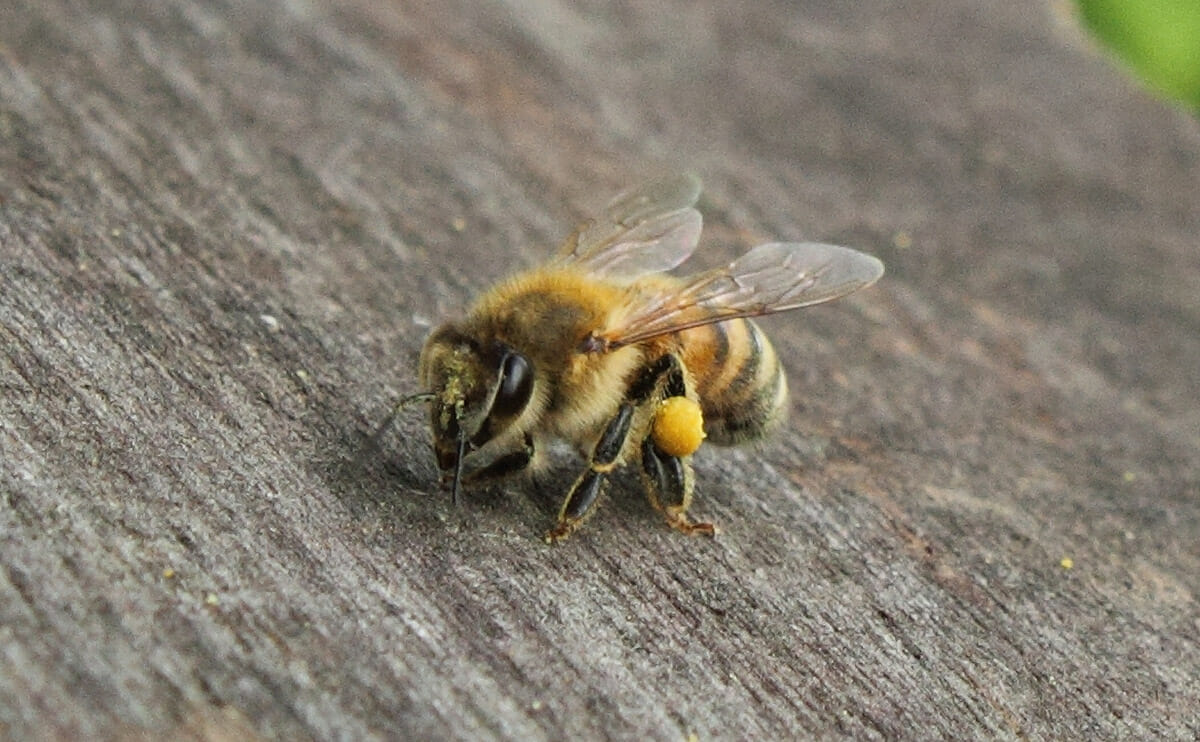So you've finally made up your mind to keep bees. But which kind?

So you’ve finally made up your mind to keep bees. You have the space, the interest, the permission, maybe even the brood boxes and the nifty protective bee suit. All that’s missing is your working colony of bees. What some novice beekeepers don’t take into account is that there are “races” or types of honeybees, as well as some native bees, each with specific characteristics that might satisfy your beekeeping needs to a tee. Here’s a rundown of the top varieties:
[mf_image_caption layout=”left” offset=”no” img=”https://modernfarmer.com/wp-content/uploads/2013/05/italian-honey-bee-better.jpg” credit=”Teddy Dai”]
[mf_h5 align=”left” transform=”uppercase”]For the Beginner: The Golden Italian [/mf_h5]
Apis mellifera ligustica. There is a good reason that this is the most popular bee in North America. First, they’re beautiful – perfectly shaped, golden in color, with pronounced stripes. There are even sub-strains like the “Italian Cordovan,” sporting light beige coloring and no stripes. And, Italians are noted for their productivity and gentle behavior. While these beauties are hard-working honey producers, they have a tendency to stray from their own hives, and sometimes rob honey from nearby hives they wander into.
Pros: Very prolific and gentle, minimal swarming tendency, tidy housekeepers, unbearably cute.
Cons: They wander off sometimes, and don’t go very far to forage for food, so you’ll need resources close by. They also tend to create their brood late in the spring, so not reliable for pollinating early crops.
Bottom Line: Right for you if you want a good, gentle, all-purpose bee. They are readily available.
[mf_image_caption layout=”left” offset=”no” img=”https://modernfarmer.com/wp-content/uploads/2013/05/carnica-bee.jpg” credit=”Richard Bartz”]
[mf_h5 align=”left” transform=”uppercase”]For the Cool Climate Ruralist: The Carnolian[/mf_h5]
Apis mellifera carnica. Darker in color than their Italian cousins, the Carnolians originated in the area around Austria and Slovenia. They are gentle and show some resistance to pests. They build up fast, and regulate the size of the hive depending on the amount of food available. So, if you are in a wild area with unpredictable forage resources, particularly an area with wet and cold weather, this might be the bee for you.
Pros: Very gentle, a long-distance forager works earlier and later than other races.
Cons: May swarm easily, and have a hard time with hot summer weather.
Bottom Line: Right for you if you want a gentle bee that can travel a good distance to feed, even in cool, wet weather.
[mf_image_caption layout=”left” offset=”no” img=”https://modernfarmer.com/wp-content/uploads/2013/05/caucasian-honey-bee.jpg” credit=”Arthur Chapman”]
[mf_h5 align=”left” transform=”uppercase”]For the Four Season Expert: The Caucasian[/mf_h5]
Apis mellifera caucasica. Silver gray to dark brown in color, this bee originated in the rugged Caucasus Mountains. They tend to make a lot of propolis, the resinous mixture that honey bees collect from tree buds and other botanical sources. This can be good (it’s antiseptic for the hive) and bad (too much is a sticky mess). Caucasians build a strong summer population, and can be quite productive. They can also be excitable, so beekeeping experience counts with these bees as they get riled easily and take a while to calm down. They can be more prone than other bees to Nosema infection, so you might need a bee doctor once in a while.
Pros: They overwinter well, and have a somewhat longer tongue than other bees, so can get into a wide variety of forage ”“ even in areas with marginal resources.
Cons: They can get unruly when provoked, more susceptible to infection than other races.
Bottom Line: Right for you if you have some experience keeping bees and have access to wild or semi-wild areas.
[mf_image_caption layout=”left” offset=”no” img=”https://modernfarmer.com/wp-content/uploads/2013/05/feral-bee.jpg”]
[mf_h5 align=”left” transform=”uppercase”]For the Survivalist: Feral Bees[/mf_h5]
Apis sp. If you don’t care about pedigree, and have a rescue instinct, you might consider adopting a feral bee swarm. Like the mutt at the pound, feral bees might be a hybrid mix of several races. They could be the bees from hell, or they might exhibit the most amazing combination of genetic traits ever seen. You just don’t know. The thing you can be sure of is that they are perfectly adapted to your area. They chose it, after all.
Pros: Well-adapted to exact conditions in your area. Free.
Cons: You have to capture them. Can be unpredictable.
Bottom Line: Right for you if you want “free bees” which are adapted to the local climate, and are ready to roll the dice on the traits of the colony.
[mf_image_caption layout=”left” offset=”no” img=”https://modernfarmer.com/wp-content/uploads/2013/05/mason-bee.jpg” credit=”André Karwath”]
[mf_h5 align=”left” transform=”uppercase”]For the Urban Orchardist: The Mason Bee[/mf_h5]
Osmia lignaria. Unlike honeybees, Mason bees are solitary. They don’t produce honey or beeswax, but are aces at pollinating your fruit and nut trees. These hard workers are usually dark metallic green or blue and build nests in hollow twigs, tubing, straws or cylinders. You can even save them some work and get cute pre-built Mason bee houses for your farm or orchard. They don’t sting, so they are good around children and pets and can be managed in a small area.
Pros: Resistant to mites and infections common among honeybees, easy to manage. Excellent for increasing fruit production. No stings.
Cons: No honey, no beeswax.
Bottom Line: Right for you if you have fruit trees in a tight space like a small yard or garden, need them pollinated for great fruit production, and don’t care about raising bees or harvesting honey. Or wearing a bee suit.
This is part of Modern Farmer’s Bee Week. Click here to see everything from our entire week of coverage all things honeybee. Bee Week: It’s like Shark Week, but with bees.